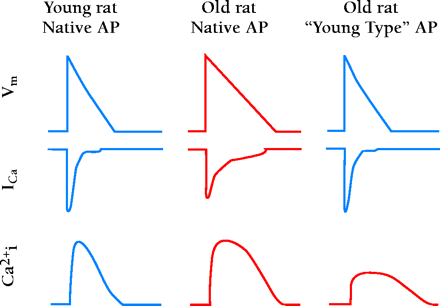
- Institution: Stanford Univ Med Ctr Lane Med Lib/Periodical Dept/Rm L109
- Sign In as Member / Individual
The “Heartbreak” of Older Age

Schematic representation of the role of age-dependent action potential (AP) prolongation on intracellular Ca2+(Ca2+i) regulation in rat ventricular myocytes. Compared to young rats (4–6 months, left) old rats (23–24 months, middle) display a similar amplitude of the Ca2+i transient triggered by a markedly prolonged AP. Relative to stimulation with their long, native AP, stimulation of old rat ventricular myocytes with a short, “young type” AP (right) increases the amplitude of L-type Ca2+ current (ICa ) but reduces its time integral and diminishes the amplitude and rate of relaxation of the Ca2+i transient. Thus, it appears that ventricular myocytes of old rats utilize AP prolongation to sustain youthful Ca2+i regulation. From (11) .


